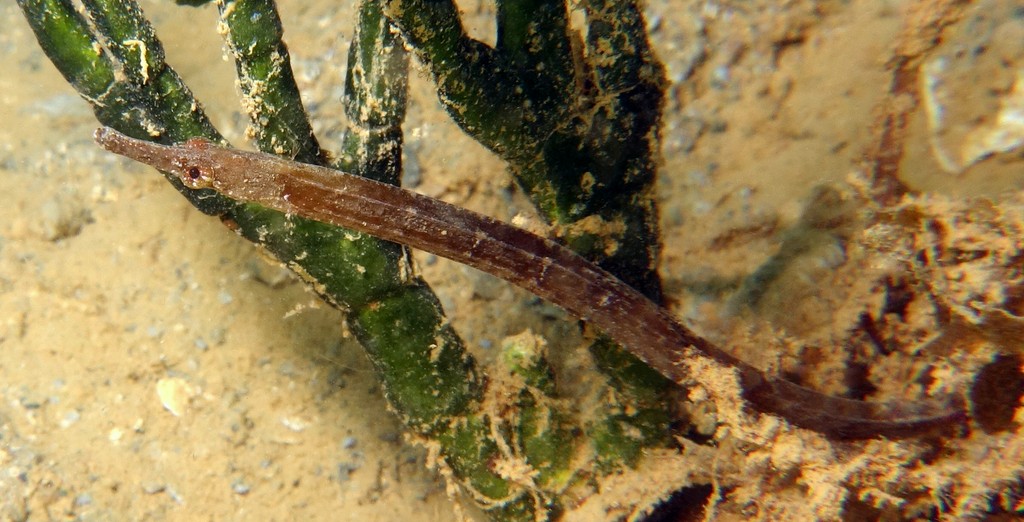FESTUCALEX WASSI - (DAWSON, 1977)
Picture courtesy of: Yves Thévenet
Poisson pipe de Wass, Wass’ pipefish, 沃斯氏光尾海龍, 沃斯氏光尾海龙,
Description
Dorsal soft rays (total): 22-23; Rings: 14-15 + 32 = 46-47; Subdorsal rings: 0.25-1.0 + 4.25-5.0 = 5.0-5.5; Pectoral-fin rays: 16-17; Pectoral-fin base with prominent superior and inferior ridges; Equivalent paired pectoral-fin ray counts: 16 (in three); Median dorsal snout ridge begins on anterior third of snout, ridge low, straight or with shallow emarginations anteriad, but arches dorsad just before nares; Lateral snout ridge short, prominent; Interorbital broadly concave between elevated orbital ridges; Postorbital and supraopercular ridges well developed; Frontal ridge somewhat elevated, nuchal and prenuchal ridges lower; opercular ridge prominent, elevated well above opercular surface; Pectoral-fin base not strongly protruding laterad, with prominent superior and inferior ridges.
Superior trunk ridges somewhat elevated above dorsum, notched between rings, ring margins essentially straight between; Sides and dorsum of tail somewhat depressed between superior and inferior ridges; Posterior angles of tail rings produced to minute sharp points; Last 1-2 tail rings without modified ridges; Venter of trunk distinctly V-shaped.
Body without dermal flaps; Vestiges of flaps persist on supraopercular and frontal ridges in two paratypes, flaps lacking in other material.
Max length: 7.4 cm SL. Depth range: 2 - 50 m.
Color
Snout of holotype hyaline in front, posterior half shaded with brown on sides and dorsum; Head elsewhere brownish with pale or tan blotches; Dorsum and sides of trunk and tail crossed by 10 diffuse pale bars, three crossing brood-pouch folds; Bars, less than interspaces brownish, irregularly blotched or flecked with tan or pale; venter of trunk mainly brownish with faint indications of tan bars near middle of each ring; Pouch folds with three narrow pale bars between principal (wider) pale markings, remainder off olds and venter of tail mainly brown; Dorsal and pectoral fins hyaline; Caudal fin brownish with pale margin.
Etymology
Festucalex: from Latin, festuca = straw + from Latin suffix, -ex = cut down.
wassi: named wassi in recognition of Richard C. Wass, collector of the typematerial.
Original description: Festucalex wassi Dawson, 1977 - Type locality: Tutuila Island, American Samoa.
Distribution
Western Central Pacific: Fiji, American Samoa, New Caledonia.
Biology
Ovoviviparous. The male carries the eggs in a brood pouch which is found under the tail. Males may be brooding at 6.95 cm SL.
Similar species
Festucalex gibbsi (Dawson, 1977) - Reported from Western Pacific: Queensland (Australia) and West Papua (Indonesia), Papua New Guinea.
